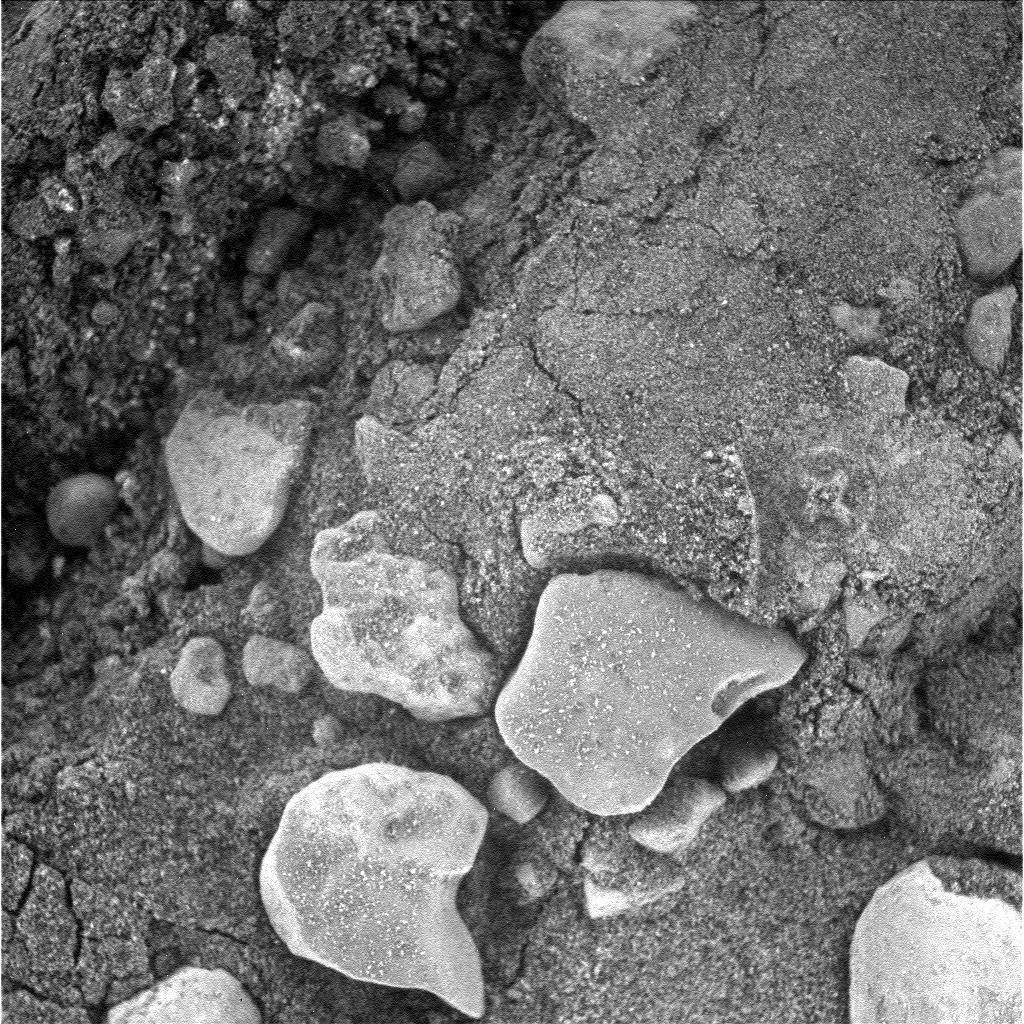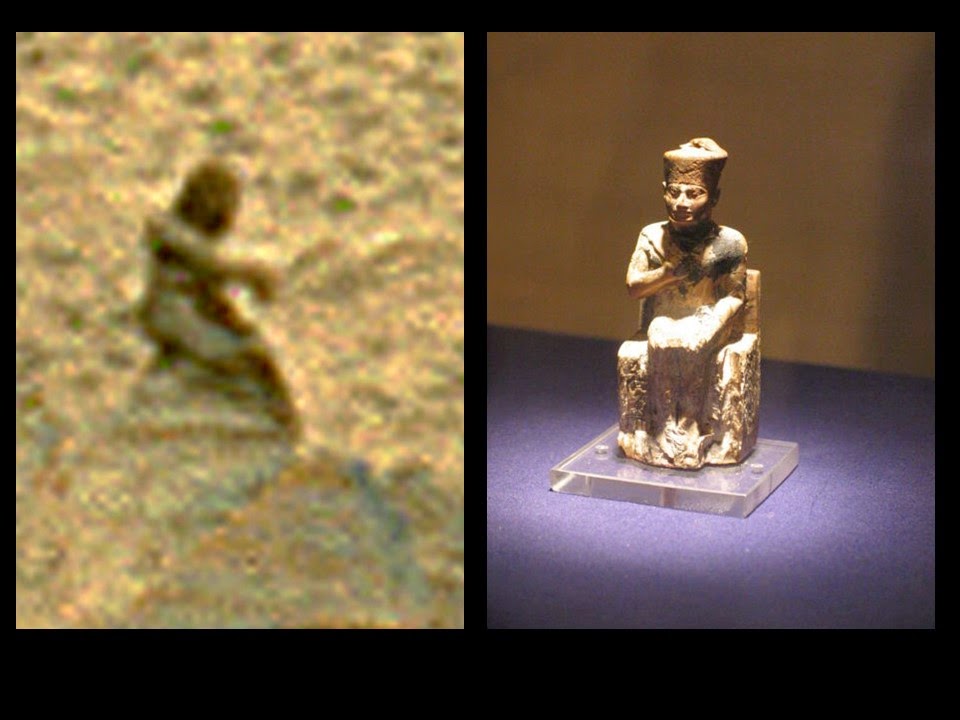Recently, a new video surfaced showing what appears to be one of the clearest examples of a mechanical implement on Mars. A set of images from the microscopic camera on the rover
Opportunity, which landed on Mars in 2004 and is still operating 10 years later, show an object that is quite clearly a fossilized valve mechanism of some kind.
Video:
Source Image:
http://mars.jpl.nasa.gov/mer/gallery/all/1/m/3720/1M458433044EFFCEQKP2955M2M1.HTML
In fact, it looks exactly like a common water shut-off valve, the kind which might be found in any house hold on Earth. So what's it doing on Mars?
Apparently, pretty much the same thing it would have done on Earth.
 |
| Original NASA source image |
Although the image was taken with the microscopic imager camera, which can resolve objects as small as 0.1mm across, this shut off valve is significantly larger than that, probably a couple of inches long. NASA critics, just as they did with the Martian figurine a few years ago, will probably argue that this is too small to be what it clearly is; a fossilized valve mechanism. But that argument is as invalid here as it was then.
 |
| The Martian Figurine (L) and an Egyptian statue of the Pharaoh Khufu, to scale. |
The truth is, size is not relevant in determining the artificiality of a given object on Mars. As our own development of nano-technology grows, such arguments (excuses) get lamer and lamer. The truth is, a mechanical object is a mechanical object, regardless of scale. And this is unquestionably a mechanical object, as you can see from the close-up.
 |
| Close-up |
A side-by side comparison is also useful in this case.
 |
| Side-by-side with a terrestrial water shut off valve |
It also bears more than a passing resemblance to other mechanical objects on Mars, and even to well known Earth artifacts like the Antikythera mechanism.
And it's not as if this fossilized valve is in any way unique. In doing research for my books
Ancient Aliens on Mars and
Ancient Aliens on Mars II, I found dozens of similar examples to include in those books. Discovered by numerous researchers who spend a lot of time looking at the rover images, the truth is that this new discovery is just one of hundreds of mechanical implements that have been found on Mars by the rovers.
What I've found is that when making these comparisons, the object most probably is exactly what it looks like, in this case a small flow valve of some kind. It appears to have been buried and fossilized long ago, but there is no doubt it is of mechanical origin.
NASA's arguments against these objects being artifacts from a ruined civilization on Mars basically come down to "it doesn't look like that," (see the Face on Mars) or "it isn't what it looks like, no matter how much it looks like (fill in the blank)." Of course, besides the discredited "size" argument, they never provide any kind of example or rational reason as to why it cannot be what it obviously appears to be. All they can do is go back to what I like to call the "Jedi mind trick defense."
 |
| "These aren't the droids you're looking for. Move along." |
Unfortunately, "these aren't the droids you're looking for" isn't a scientific argument, or even science. It's just a political debating point that lacks any kind of scientific validity. The simple Truth is that the only scientifically neutral position on Mars is that it is just as likely that there was a highly advanced civilization on Mars as that there wasn't. The fact that there is a "consensus" against the idea within the NASA funded planetary science community means nothing. What matters is the evidence, and that we have in ever increasing abundance. As author Michael Crichton pointed out so eloquently in an address given at Caltech entitled "
Aliens Caused Global Warming":
"Historically, the claim of consensus has been the first refuge of scoundrels; it is a way to avoid debate by claiming that the matter is already settled. Whenever you hear the consensus of scientists agrees on something or other, reach for your wallet, because you're being had."
So as a veritable army of independent, sharp-eyed researchers continues to scour the images being returned from Mars, the odds are that we will continue to find new evidence that a vast and highly advanced civilization once flourished there. If our opponents truly cared about science, they would move on from the currently unprovable but increasingly unlikely position that it didn't exist to studying what in fact happened to it, as that question has far more critical implications to our own survival.
And whatever destroyed that civilization on Mars, I'm betting big bucks that it wasn't Global Warming.
UPDATE:
My Ancient Aliens buddy
Jason Martell has suggested this could be a Rock Abrasion Tool (RAT) mark left over from
Opportunity drilling on the rock. I initially considered this but dismissed it for several reasons, although I should have probably brought it up in my initial post.
 |
| RAT |
The RAT is a circular saw that has been used hundreds of times on rocks (
and fossils) on Mars since the twin rovers landed in 2004. It leaves a very distinctive circular cut on rocks characterized by a powdery residue around the edges and occasionally a second concentric circle inside the wider circle. It does not, under any circumstances, leave a cut with 4 equally spaced "spokes" inside the circular cut, which is what we see on the valve feature. Typical RAT cuts are seen below.
In addition, as is plainly obvious from the images presented, the RAT leaves not only the powdery residue, but a clearly recessed cut on the rock. The circular portion of the "valve wheel" feature is clearly not recessed, but actually sticking slightly out of the surrounding rock.
Just like we'd expect from a fossilized mechanical implement.
--MB






